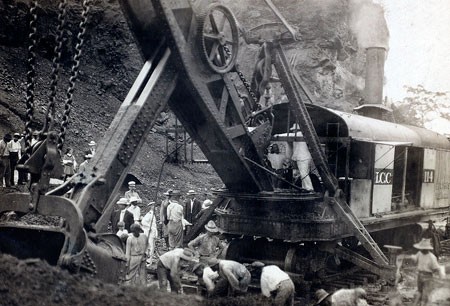The Panama Canal stands as a monumental feat of engineering and a pivotal moment in global trade history. Its construction, completed in 1914, fulfilled a long-held ambition of the United States: to create a trans-isthmian canal that would drastically shorten shipping routes between the Atlantic and Pacific Oceans. But why was the Panama Canal built, and what were the driving forces behind this ambitious project? The answer lies in a confluence of economic aspirations, strategic military considerations, and the burgeoning global power of the United States in the late 19th and early 20th centuries.
For centuries, the idea of a waterway cutting through the Central American isthmus had captivated global powers. The primary motivation was economic. Imagine the journey for ships traveling between the east and west coasts of the Americas before the canal. They were forced to undertake a perilous and lengthy voyage around the tip of South America, either through the stormy Drake Passage or the Strait of Magellan. This added thousands of miles and weeks to voyages, significantly increasing shipping costs and hindering trade. Business leaders and politicians in both the United States and Great Britain recognized the immense potential of a canal to revolutionize global commerce by providing a much faster and cheaper route.
Early attempts to realize this vision faced formidable obstacles. In 1850, the Clayton-Bulwer Treaty between the United States and Great Britain aimed to manage their competing interests in Central America, specifically regarding a potential canal through Nicaragua. However, this agreement ultimately stalled progress. It was the French, under the ambitious leadership of Ferdinand de Lesseps – the celebrated builder of the Suez Canal – who first attempted to construct a canal across Panama, then a province of Colombia, in 1880. Despite de Lesseps’ prior success, the Panamanian jungle proved to be a vastly different and far more challenging environment than the Egyptian desert.
The French endeavor was plagued by devastating outbreaks of malaria and yellow fever, decimating the workforce. These tropical diseases, coupled with immense engineering challenges and financial mismanagement, led to the catastrophic failure of the French project after nine years and the tragic loss of approximately 20,000 lives. This setback, however, did not diminish American interest in the canal; in fact, it arguably intensified it, highlighting both the potential rewards and the significant difficulties.
The dawn of the 20th century saw the United States emerge as a major global power, increasingly assertive in its foreign policy and economic ambitions. The Hay-Pauncefote Treaty of 1901, which superseded the Clayton-Bulwer Treaty, cleared the way for the United States to unilaterally construct and control a trans-isthmian canal. A heated debate ensued in the US Senate regarding the optimal location – Nicaragua or Panama. Ultimately, Panama was chosen, and in 1902, the Senate officially voted in favor of the Panamanian route.
However, negotiations with Colombia for the rights to build the canal in Panama quickly soured. The Colombian congress rejected the financial terms offered by US Secretary of State John Hay, stalling the project once more. President Theodore Roosevelt, determined to see the canal built, adopted a more assertive approach. In a move that remains controversial, Roosevelt dispatched US warships to Panama in 1903, effectively supporting and facilitating Panama’s declaration of independence from Colombia.
 President Theodore Roosevelt inspects Panama Canal construction circa 1908, highlighting American determination to complete the pivotal trade route.
President Theodore Roosevelt inspects Panama Canal construction circa 1908, highlighting American determination to complete the pivotal trade route.
The newly formed Republic of Panama, heavily influenced by the US, promptly negotiated the Hay-Bunau-Varilla Treaty of 1903. This treaty granted the United States a 10-mile wide strip of land in perpetuity for the canal, along with a one-time payment of $10 million and an annual annuity of $250,000 to Panama. Crucially, the US also guaranteed Panama’s independence. With the treaty secured, the massive engineering undertaking began in earnest.
Completed in 1914, the Panama Canal was a resounding triumph of American engineering and organizational prowess. It dramatically reduced travel time and shipping costs, fostering global trade and solidifying the United States’ economic influence. Strategically, the canal allowed the US Navy to move swiftly between the Atlantic and Pacific fleets, enhancing American military power projection. While US control of the canal would later become a point of contention in US-Panamanian relations, its construction at the time was unequivocally viewed as a landmark achievement in American foreign policy and a testament to the nation’s growing global stature. In essence, the Panama Canal was built to unlock global trade, enhance US strategic power, and symbolize American ambition and technological capability on a world stage.
